Silk fabric is one of the high-quality fabrics but not too strange to everyone today. This is a material with many outstanding features and is widely used in the garment fashion industry or furniture, and bedding,…
So what are silked fabrics, and what features do they have that make them so popular? Let’s go with Printlonestart and learn about this high-quality fabric
What is silk fabric?

Silk fabric is a fabric with a thin, smooth surface, woven from a type of silk, and the best type of silk to create silk is silk. Silkworm farmers will spin soft silk threads to knit and weave into silk.
This is also a type of profession that has appeared for a long time. From then on, silk became an expensive fabric only for the elite in society at that time.
Silk fabric has the English name “Silk Fabric”. Silk is a high-class silk fabric, very thin, light, smooth, and woven from the cocoons of butterflies, and silkworms,…
Silk fabric is one of the most popular high-quality fabrics today. They have a long history, creating a soft and elegant feeling for the user.
Evaluation of the quality of silk fibers will depend greatly on the type of leaves used to feed the silkworms. At present, the types of natural silk used to produce silk usually include mulberry silk, oak silk, peanut silk, and cassava leaf silk. Among these types of silk, mulberry silk is the most commonly used and preferred in the world.
Origin of silk fabric

The origin of silk fabric first appeared in China, the profession has been around for a long time, around 6000 BC. This is the fabric that the kings and aristocracy used or used as gifts and tributes at that time.
But now, silk fabrics have become prevalent, they are used by all walks of life to form everyday clothes. China’s most famous brand is Hanzhou silk fabric and Guangzhou silk fabric.
Silk fabric production process
To produce high-quality silk fabrics, artisans need to go through an extremely rigorous production process. Silkworm rearing is a process that requires meticulousness and meticulousness of silkworm raising and weaving workers to bring about soft and attractive silk. Here are the production steps of silk fabric commonly taken to make this fabric:
Silk blanket

In a year, the most suitable time for workers to herd silkworms is in spring and autumn. Because the weather and climate of these two seasons are relatively cool, favorable for silkworms to develop best. From the time the silkworm hatches to the time the silkworm releases silk to make the cocoons is done in about 25 days with 4 molting times and is divided into 5 different ages.
The main food of silkworms is mulberry leaves and mulberry leaves, which are often grown in clean soils, without alum pollution of water sources. Silkworms eat around the clock, after about 3 times the silkworm grows to its maximum size, the silkworm crawls to a suitable place to release silk and create cocoons.
Release the cocoon

The silkworms will be selected, until the silkworms are ripe, they will be caught to make silkworms release silk. Ne is a frame made from tree trunks consisting of 5 different layers. These trunks are arranged to form airy rectangular cells.
Silkworms will release silk from the outside to the inside, first, the silkworm will release a few rings of raw silk covering the outside to shape the cocoon, this outer ring is called a cocoon. During the next 4 days, the silkworm will rotate its body in a figure 8 motion about 300,000 times continuously to release a nearly 1km long silk thread, which is wrapped around and forms a cocoon.
Silk is a liquid, viscous and transparent protein fiber, they are secreted from the salivary glands of silkworms, when this liquid is exposed to air, it will solidify and form silk fibers. At the same time, when releasing silk, silkworms also secrete another liquid called sericin, which is a glue used to stick two thin silk branches together to form silk.
After releasing all the silk, the exhausted silkworm lies still in the cocoon and turns into pupae, at which time the worker can begin to remove the cocoon to take away to nurse the silk.
Silk incubation

After the silkworm has come up to dodge about 1 week is the right time to start incubating silk. Silk must be incubated within 5 days or else silkworm pupae will turn into moths and they will bite the cocoon shell. At that time, the silk thread will be broken so that the silk yarn when weaving will no longer be as smooth and of good quality as the silk thread that is pulled intact.
To incubate silk, the worker first needs to drop the cocoons into boiling water and stir well to soften the cocoon and peel off the rough silk ring that surrounds it. After that, the worker must find the root of the silk to pull out and tie 10 strands of silk into 1 thread and wrap it around a specialized silk branch. Silk yarn after pulling is called raw silk.
Weaving silk fabric

From the silk thread that has been nursed, the worker begins the process of weaving silk fabric. Depending on the quality of the silk, and the way the yarn is twisted, people give different types of silk with different qualities. Depending on the number of twines, thick and thin silk fabric creates a variety of rich silk fabrics with different thinness, thickness, drape, soft, hard, and iridescent.
According to the Vietnamese traditional weaving style, the mixing of warp and weft yarns has created different types of silk: Latin silk fabric, snow silk fabric, cotton silk fabric, Latin silk fabric, synthetic silk fabric, etc…
The process of weaving silk in traditional silk weaving villages in Vietnam today is done by manual methods, on rudimentary weaving machines and tools, requiring the weavers to be meticulous and hard working. and has a lot of experience to create the best, most beautiful silks.
Silk fabric dyeing

The purest, most basic color of high-class silk fabric is ivory-white silk and is still rough because of the sericin glue released from silkworms. To clean this layer of glue, workers need to soak the woven silk in hot water, this stage is called silk washing.
In the past, craft villages often dyed silk fabrics with natural materials such as bark, leaves, or tubers such as brown tubers, etc. to create basic colors such as green silk, black silk, etc. … Today, with modern industrial dyeing and dyeing techniques, workers can bring more diverse, sharper and more vibrant colors such as red silk fabric, yellow silk fabric, …
Characteristics of silk fabric
Silk fabric is considered one of the most durable natural fabrics today. Therefore, they carry many outstanding features including advantages and disadvantages. Specifically:
Advantages of silk fabric
Silk fabric has many outstanding advantages, bringing convenience to users such as:
Silk fabric has the characteristics of lightness, durability, and good heat insulation. Therefore, the costume is made from very soft and smooth silk fabric, bringing a luxurious feeling while in use.
Silk fabric can absorb moisture and absorb sweat extremely well. Therefore, you are very secure when using silk fabric, ensuring the best for the normal functioning of the skin.
Silk fabrics are safe for the skin, limiting the possibility of allergies like chemically dyed fabrics or other rough fabrics
Silk fabric is made from natural materials, so it is very safe for the health of the user and the environment.
Disadvantages of silk fabric
In addition to the above outstanding advantages, silk fabric also has some disadvantages as follows:
Silk fabrics are easily bitten by insects and mites
Easily yellowed by sweat or moldy due to moisture
Since this is a natural material, it is quite difficult to dye the desired color
Silk fabric is not as elastic as other fabrics
Preserving silk fabrics is quite complicated, meticulous, careful, and expensive.



 T-shirts
T-shirts
 Polo T-shirts
Polo T-shirts
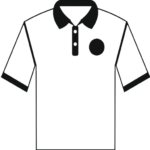 Embroidery
Embroidery
 Sweatshirts & Hoodies
Sweatshirts & Hoodies
 Women's clothing
Women's clothing
 Kid's clothing
Kid's clothing
 Hats
Hats
 Featured Brand
Featured Brand
 Bar & Restaurant
Bar & Restaurant
 Construction
Construction
 Conventions / Expos
Conventions / Expos
 Medical
Medical
 Nails / beauty salon ..
Nails / beauty salon ..
 Events & Celebrations
Events & Celebrations
 4th of July
4th of July
 Black History Month
Black History Month
 Christmas
Christmas
 Fathers Day
Fathers Day
 Halloween
Halloween
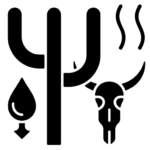 Animal Causes
Animal Causes
 Autism
Autism
 Cancer
Cancer
 Non-Profits
Non-Profits
 Walks / Runs / Marathons
Walks / Runs / Marathons
 Sports & Teams
Sports & Teams
 Baseball
Baseball
 Basketball
Basketball
 Badminton
Badminton
 Bowling
Bowling
 Hockey
Hockey
 College
College
 Clubs / Organizations
Clubs / Organizations
 College Sports
College Sports
 Departments
Departments
 Greek Life
Greek Life
 Homecoming
Homecoming
 Real Life Heroes
Real Life Heroes
 Air Force
Air Force
 Army
Army
 Coast Guard
Coast Guard
 Medical Staff
Medical Staff
 Fire Department
Fire Department
 K-12 Schools
K-12 Schools
 Chorus and Choir
Chorus and Choir
 Class Of
Class Of
 Dances & Prom
Dances & Prom
 Drama
Drama
 Clubs
Clubs
 Bible School
Bible School
 Church Youth Groups
Church Youth Groups
 Mission Trips
Mission Trips
 Meditation
Meditation

































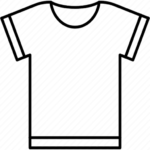 Short Sleeve T-shirts
Short Sleeve T-shirts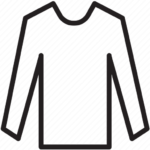 Long Sleeve T-shirts
Long Sleeve T-shirts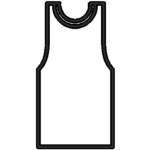 Tank Top & Sleeveless
Tank Top & Sleeveless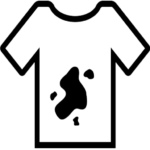 Tie-Dye T-shirts
Tie-Dye T-shirts Soft Tri-Blend T-shirts
Soft Tri-Blend T-shirts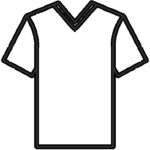 V-Neck T-shirts
V-Neck T-shirts Pocket T-shirts
Pocket T-shirts Made in USA
Made in USA Sweatshirts Hoodies
Sweatshirts Hoodies Hoddies
Hoddies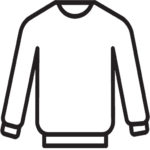 Crew Neck Sweatshirts
Crew Neck Sweatshirts Full Zip Sweatshirts
Full Zip Sweatshirts Quarter Zip Up Pullover
Quarter Zip Up Pullover Heavyweight Sweatshirts
Heavyweight Sweatshirts Fleece Jackets & Pullovers
Fleece Jackets & Pullovers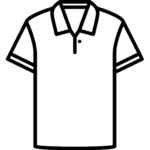 Polo T-shirts
Polo T-shirts Performance Polo Shirts
Performance Polo Shirts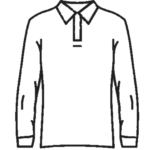 Long Sleeve Polo Shirts
Long Sleeve Polo Shirts Golf Polo Shirts
Golf Polo Shirts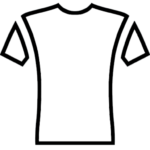 Short Sleeve Performance Shirts
Short Sleeve Performance Shirts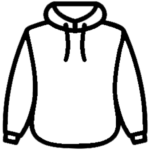 Performance Sweatshirts & Hoddies
Performance Sweatshirts & Hoddies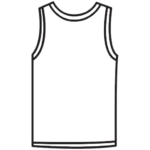 Performance Tanks
Performance Tanks Quarter Zip Performance Shirts
Quarter Zip Performance Shirts Rash Guards Swim Shirts
Rash Guards Swim Shirts Performance Sweatpants & Joggers
Performance Sweatpants & Joggers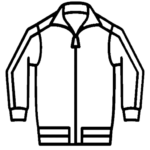 Track Jackets
Track Jackets Shorts
Shorts Nike
Nike Adidas
Adidas Outerwear
Outerwear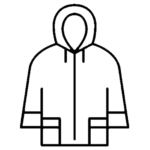 Rain Javkets
Rain Javkets Insulated & Down Jackets
Insulated & Down Jackets The North Face Jackets
The North Face Jackets Work Jackets
Work Jackets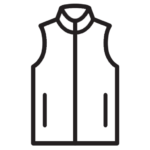 Vests
Vests Gyms & Fitness
Gyms & Fitness Landscaping
Landscaping Pets store
Pets store Band & Orchestra
Band & Orchestra Club
Club School Pride
School Pride Hanukkah
Hanukkah Mardi Gras
Mardi Gras Mothers Day
Mothers Day New Years
New Years Patriotic
Patriotic St. Patrick’s Day
St. Patrick’s Day Thanksgiving
Thanksgiving Valentines Day
Valentines Day Cheerleading
Cheerleading eSports
eSports Football
Football Golf
Golf Lacrosse
Lacrosse MMA & Boxing
MMA & Boxing Mud Runs
Mud Runs Hockey
Hockey Pickleball
Pickleball Poker
Poker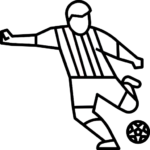 Soccer
Soccer Swimming
Swimming Tennis
Tennis Track & Field
Track & Field Volleyball
Volleyball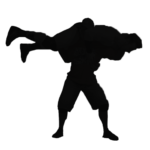 Wrestling
Wrestling